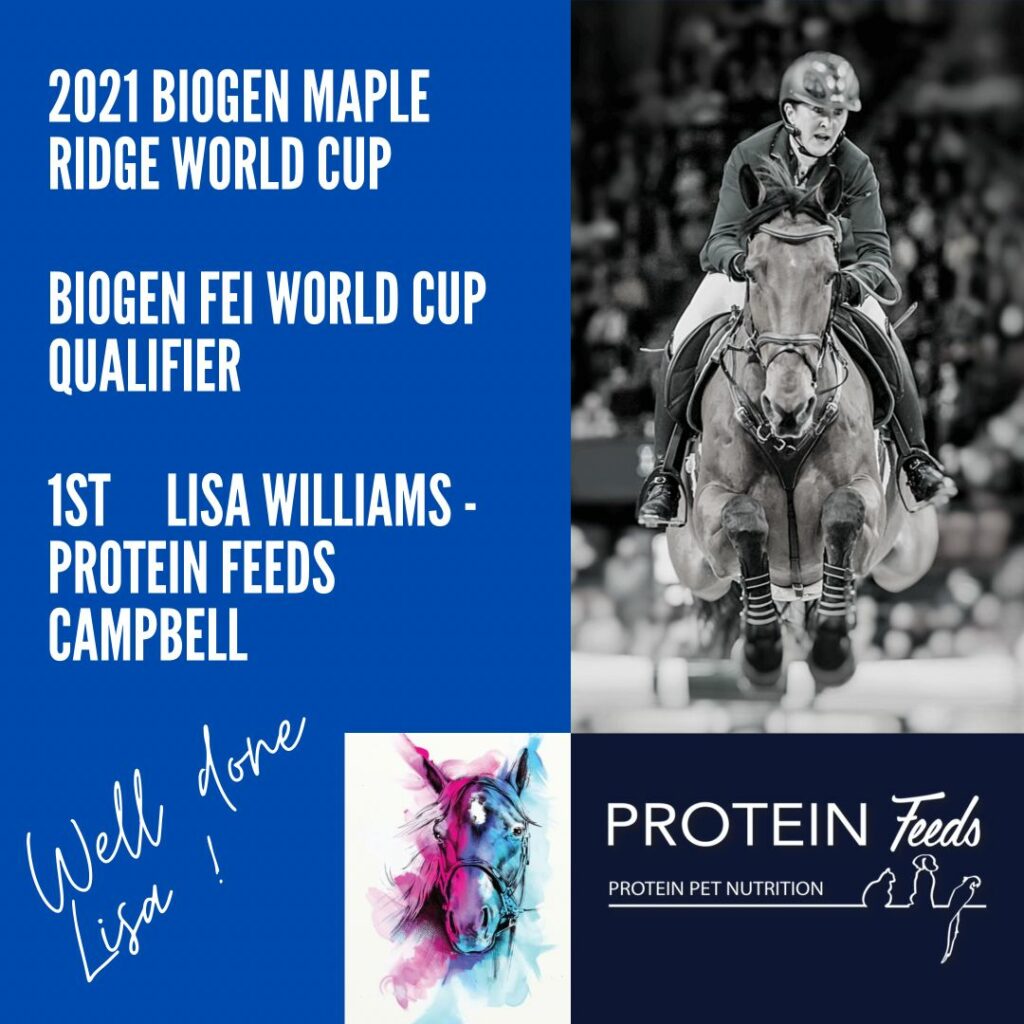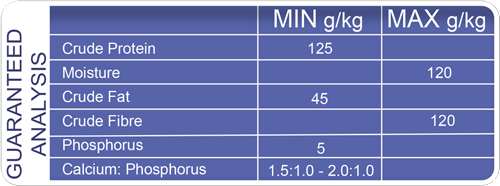Horse Food
INGREDIENTS
- Processed grain by-products: Wheaten bran Plant protein product: soybean oil cake, full-fat soya, sunflower oil cake
- Roughage products: Lucene, te hay, wheat straw Molasses
- Products: Molasses meal, liquid sugar cane molasses
- Vitamins and Minerals: A, D, E, K, B1, B2 B6, B12, folic acid, niacin, pantogenic acid, biotin salt, feed lime, monocalcium phosphate cobalt, iodine, selenium, magnesium, magnese, iron, zinc, copper
- Other: vegetable oil lysine, methionine, mold inhibitor enzymes, anti-oxidant
Good feeding strategies
- Build the horse’s ration around high-quality roughage
- Make dietary changes slowly to allow the microbes time to adapt to the new diet (7 – 10 days)
- Stay close to a natural feeding pattern by allowing the horse to graze or eat hay as continuously as possible
- Feeding three or four concentrate meals, evenly spaced throughout the day, is more beneficial to the horse than huge meals –
- Split daily grain rations into two or more small feedings of less than 2.3kg each. (Maximum 0.23 kg per 45 kg of body weight, 2.25 kg for a 450 – kg horse)
- pH-Bu‑er or “Anti-acids” supplements o‑er protection by neutralizing excess acid
- Offering low-starch feed with elevated fermentable ber and fat
- Minimizing physical and emotional stress – Lucerne is well known for its buffering capacity
- Useful sources of fat include corn oil and full-fat soya, both of which are rich in omega-6 fatty acids
- More coarse feed particles have a retention time in the stomach and small intestine and improve starch digestion – Provide a constant supply of water
- Follow a regular schedule of deworming dental care and exercise
- Monitor over consumption of fresh grass, especially for animals that are being turned out to pasture after long periods of stalling
Our horse story goes like this...
As an animal nutritionist, I know that despite their large body size, horses can be very sensitive if fed a concentrated diet.
Indigestion is rarely caused by what is fed but rather by how it is fed. Hindgut digestion, which occurs in the horse cecum and large colon, progresses most anciently when horses are allowed continual access to forage and limited access to feedstock‑s that could upset the pH of the cecum, including large grain meals.
The hay alone will not fill the daily nutrient regiments of all the essential nutrients of your horse. The nutrient requirements of your horse will vary depending on its age, level of activity, and gestation period.
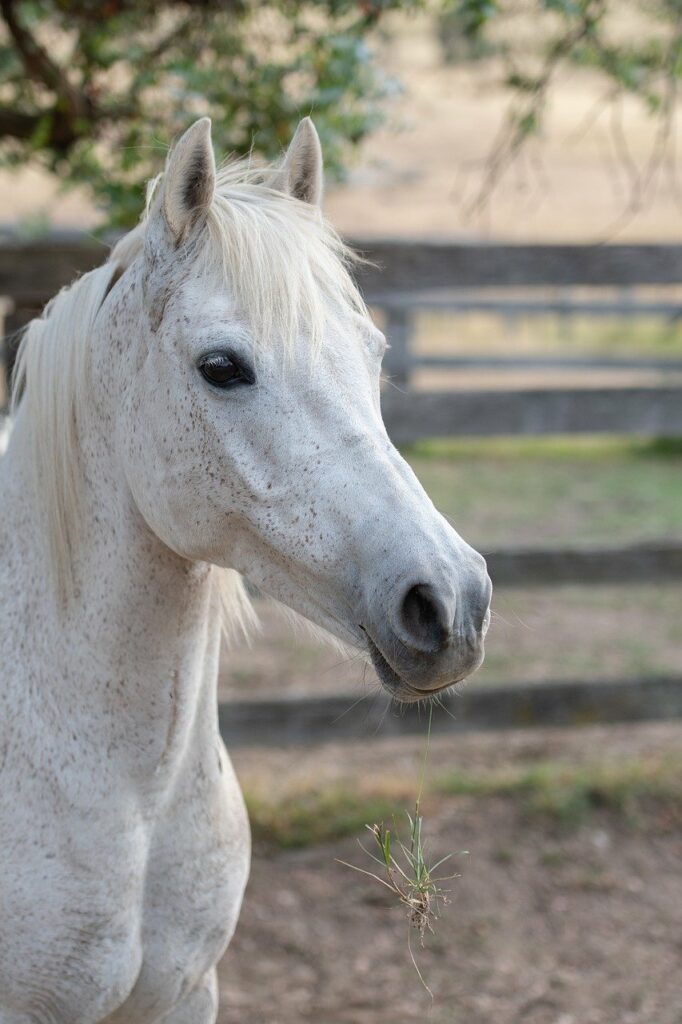
Starch-digesting bacteria produce lactic acid and that increases the acidity of the hindgut, commonly known as hindgut acidosis.
This increase in acidity kills the beneficial, ber-digesting bacteria. Toxins released during this process can result in colic and founder laminitis.
Therefore, it is recommended that any feed changes be made gradually over 7 days to decrease the overpopulation of microbes and an increase in the fermentation process leading to an excessive build-up of gas and as a result, colic. On average, the process of ingesting food, the digestion of it, and the passage of waste material can take 36 to 72 hours.
Yours sincerely
Leon vd Westhuizen
Animal Nutritionist
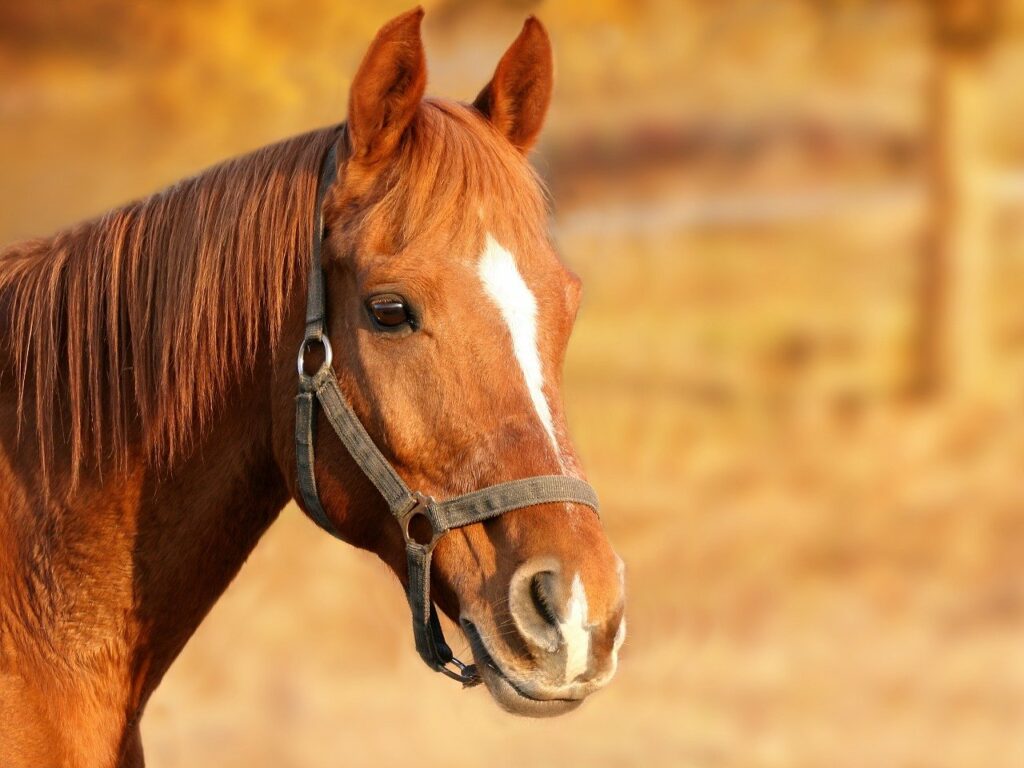
A horse owner that can understand how the complex equine digestive system functions can better manage their horse’s feeding program to ensure that they are getting the best nutrients with the least complications.
In the stomach and small gut, dietary protein is digested and absorbed as amino acid and much of the soluble carbohydrate is hydrolyzed and absorbed as monosaccharides as well as fats and essential vitamins.
Structural carbohydrates like cellulose and hemicellulose, along with starch and other soluble carbohydrates that escape digestion in the small intestine, ow into the cecum and colon (large intestine) where it is subjected to fermentation by bacteria, protozoa, and fungi. Energy producing volatile fatty acids, amino acids, and B and K vitamins are a result of this fermentation process that are then absorbed in the cecum. Functions of the colon include absorption of water, electrolytes, and short-chain fatty acids. These fatty acids are the main source of energy in the horse.
The microbial population in the cecum and colon becomes specific for the type of food that the horse consumes. Since the bacterial and protozoal ora of the hindgut is geared for ber fermentation, the large intestine is susceptible to upset if it receives large amounts of undigested sugars.
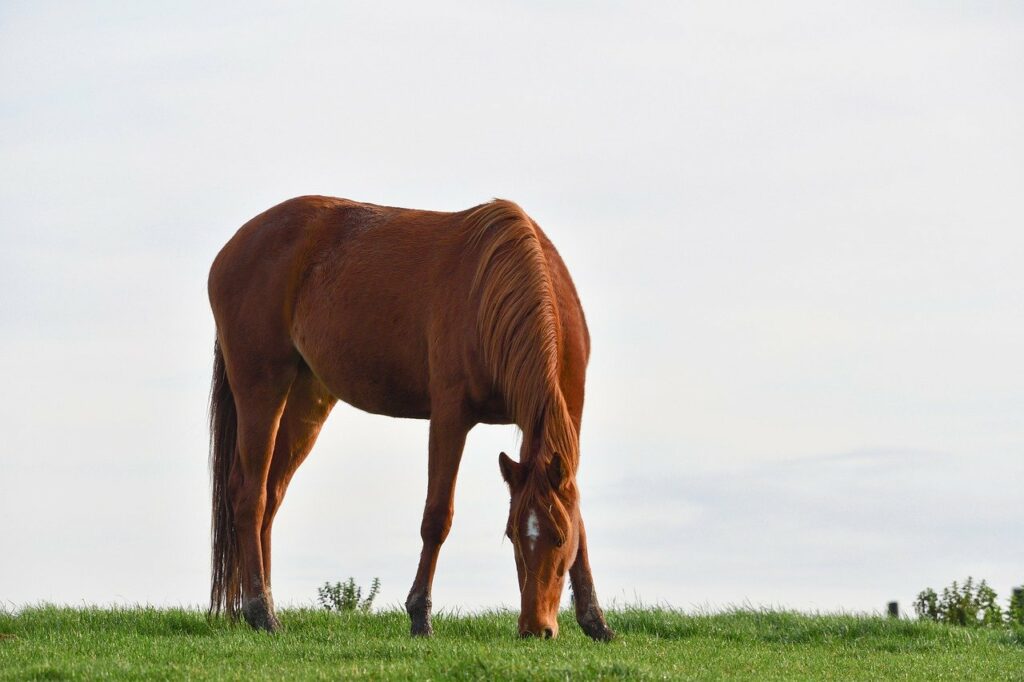
Our horse story goes like this...
As an animal nutritionist, I know that despite their large body size, horses can be very sensitive if fed a concentrated diet.
Indigestion is rarely caused by what is fed but rather by how it is fed. Hindgut digestion, which occurs in the horse cecum and large colon, progresses most anciently when horses are allowed continual access to forage and limited access to feedstock‑s that could upset the pH of the cecum, including large grain meals.
The hay alone will not fill the daily nutrient regiments of all the essential nutrients of your horse. The nutrient requirements of your horse will vary depending on its age, level of activity, and gestation period.

A horse owner that can understand how the complex equine digestive system functions can better manage their horse’s feeding program to ensure that they are getting the best nutrients with the least complications.
In the stomach and small gut, dietary protein is digested and absorbed as amino acid and much of the soluble carbohydrate is hydrolyzed and absorbed as monosaccharides as well as fats and essential vitamins.
Structural carbohydrates like cellulose and hemicellulose, along with starch and other soluble carbohydrates that escape digestion in the small intestine, ow into the cecum and colon (large intestine) where it is subjected to fermentation by bacteria, protozoa, and fungi. Energy producing volatile fatty acids, amino acids, and B and K vitamins are a result of this fermentation process that are then absorbed in the cecum. Functions of the colon include absorption of water, electrolytes, and short-chain fatty acids. These fatty acids are the main source of energy in the horse.
The microbial population in the cecum and colon becomes specific for the type of food that the horse consumes. Since the bacterial and protozoal ora of the hindgut is geared for ber fermentation, the large intestine is susceptible to upset if it receives large amounts of undigested sugars.

Starch-digesting bacteria produce lactic acid and that increases the acidity of the hindgut, commonly known as hindgut acidosis.
This increase in acidity kills the beneficial, ber-digesting bacteria. Toxins released during this process can result in colic and founder laminitis.
Therefore, it is recommended that any feed changes be made gradually over 7 days to decrease the overpopulation of microbes and an increase in the fermentation process leading to an excessive build-up of gas and as a result, colic. On average, the process of ingesting food, the digestion of it, and the passage of waste material can take 36 to 72 hours.
Yours sincerely
Leon vd Westhuizen
Animal Nutritionist
Protein Feeds is the proud sponsor of Lisa Williams and Campbell.
Winner of the 2021 The United Aviation Group SA Derby 2021 & Maple Ridge Biogen world cup 2021.
